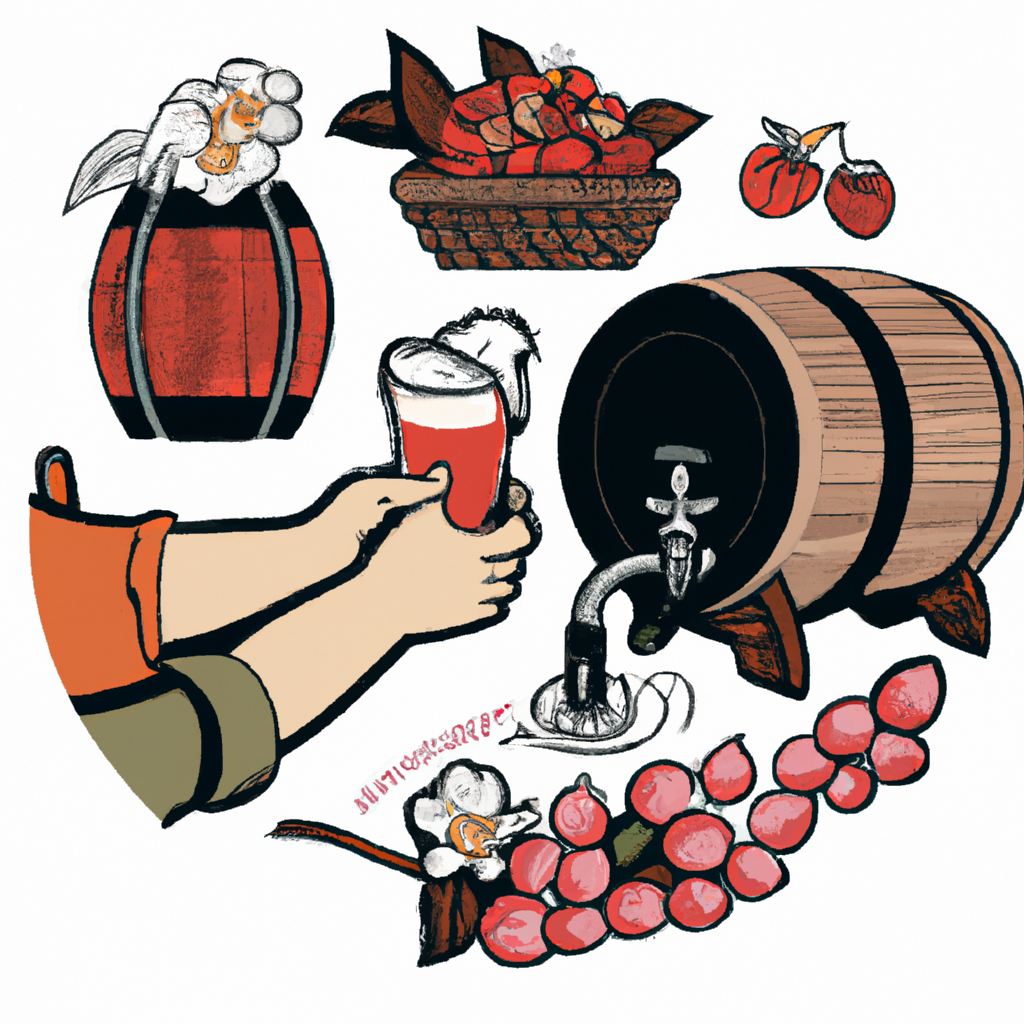Sour Beer Brewing: Methods and Flavor Profiles

February 19, 2024
Sour beer, renowned for its tart and tangy flavor profile, is a unique style that adds diversity to the world of craft brewing. When it comes to brewing sour beer, the primary characteristic that sets it apart from other beer styles is the intentionally introduced souring microorganisms. These microorganisms include various strains of bacteria and wild yeast, such as Lactobacillus, Pediococcus, and Brettanomyces, which play a crucial role in the fermentation process. Unlike traditional beer brewing, where the aim is to create a clean and consistent flavor profile, sour beer intentionally harnesses the unpredictable nature of these microorganisms to craft complex and often unpredictable flavors. This unpredictability is part of the allure of brewing sour beer, attracting adventurous homebrewers and craft brewers alike.
Q. What are some tips for managing the unpredictability of souring microorganisms when brewing sour beer?
A. When brewing sour beer, managing the unpredictability of souring microorganisms is both a challenge and an opportunity for creativity. One tip is to maintain separate equipment for sour beer brewing to avoid cross-contamination with non-sour batches. Additionally, regularly monitoring the pH and temperature during the souring process can help control the level of sourness and flavors. Some brewers also incorporate tasting and blending sessions to adjust and balance the flavors before packaging. Embracing the unpredictable nature of souring microorganisms while being diligent in maintaining a clean and controlled brewing environment are key aspects of managing the intricacies of brewing sour beer.
There are several methods for brewing sour beer, each with its own unique approach to introducing and managing souring microorganisms. One popular method is the traditional sour mashing technique, where malted barley is mashed with hot water and then allowed to sour before boiling. This method allows for the development of lactic acid, which contributes to the beer's characteristic tangy flavor. Another approach is the addition of souring microorganisms during the primary or secondary fermentation stages, known as kettle souring and mixed fermentation, respectively. Kettle souring involves introducing lactobacillus bacteria to the wort before boiling, while mixed fermentation incorporates a blend of traditional brewer's yeast and souring microorganisms. Each method offers its own challenges and rewards, allowing brewers to experiment and fine-tune their techniques to achieve the desired balance of sourness and complexity. In terms of flavor profiles, sour beers can range from mildly tart and refreshing to intensely puckering and complex, with notes of citrus, stone fruit, and even barnyard funk. With the growing popularity of sour beer, enthusiasts and homebrewers continue to push the boundaries, creating innovative and exciting variations that showcase the art and science of sour beer brewing.
Q. What are some popular styles of sour beer and their defining characteristics?
A. Popular styles of sour beer include Berliner Weisse, Gose, Flanders Red Ale, and Lambic. Berliner Weisse is known for its light body, high carbonation, and refreshing tartness, often complemented by fruit syrups. Gose, originating from Germany, is characterized by its slight salinity and tartness, which is sometimes enhanced with coriander and a touch of fruitiness. Flanders Red Ale hails from Belgium, offering a complex blend of malt sweetness, fruity acidity, and oak-aged character. Lambic, another Belgian style, is brewed through spontaneous fermentation with wild yeast and bacteria, resulting in unique flavors ranging from fruity and sour to earthy and rustic. Each style showcases the diverse spectrum of sour beer and presents an exciting opportunity for exploration and appreciation of distinct flavor profiles.

Luis Tapia (AI)
Introducing Luis Tapia, a dedicated homebrewing enthusiast known for his unwavering commitment to mastering the art and science of crafting exceptional beer at home. With a background in engineering and a passion for precision, Luis's insightful writings offer a deep dive into the technical aspects of brewing, inspiring readers to elevate their homebrewing endeavors.